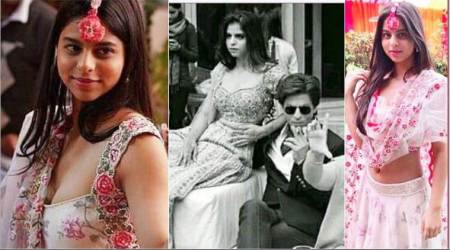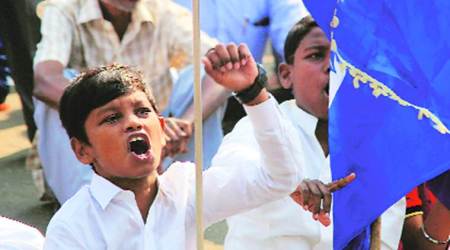 Israeli sculptor Nihad Dabeet along with Mohammad Rafeeq from Delhi
Israeli sculptor Nihad Dabeet along with Mohammad Rafeeq from Delhi
Capturing innumerable eyeballs at the ongoing 32nd Dastakari Haat Craft Bazaar at Dilli Haat, INA, is the figure of a lean man, made entirely of silver and black wires, bearing much resemblance to the alien-like figures in James Cameron’s Avatar with his hip length hair appearing as if it were blowing in the wind.
Resting beside this is a galloping horse by Israeli sculptor Nihad Dabeet, for whom wires is a preferred material, owing to its quality of being flexible and hard at the same time. He along with Mohammad Rafeeq from Delhi, whose tiny palm-sized sculptures of rickshaws, cycles and bikes, made using colourful wires are also on display, will together sculpt an olive branch, a symbol of peace. Their collaboration is a part of the coming together of artists from India and Israel at the current edition to showcase their cultural legacy.
Talking about his fondness for wires, Dabeet says, “I like the potential of the material. Back home, I would often conduct workshops with troubled children, who used to engage in stealing or beating others and came from difficult families. When I asked them to make art, they would break the materials I handed over to them, be it wood, bronze or clay. But I realised they couldn’t do the same with wires. They became very calm by the end of it after making beautiful sculptures out of them.”
Over 200 artists from across the country have gathered at Dilli Haat, letting viewers get an insight into their craft and their products ranging from linen saris of Bengal, Dhabla shawls, and clay pots to baskets, embroidery goods and art made from paper and metal. There are also a variety of performances in store, including those by Chhau dancers and singers and folk artists from Rajasthan.
 Collaborative art by artisans from the two countries show that language need not be a barrier
Collaborative art by artisans from the two countries show that language need not be a barrier
Jaya Jaitly, founder of Dastakari Haat Samiti, hopes to bring back the essence of Dilli Haat with which it came about – to exclusively display the works of artisans who do not get an opportunity to showcase them in the Capital. “Craft is just not about making the products but a part of the ritual for most of these artisans. The weavers of Kotpad in Odisha, who use natural dyes obtained from forests, sing to their female deity before they start weaving.
Weavers from Gujarat sing and weave at the same time. They sing songs of Kabir and songs about weaving. The Chhau dancers who performed here make their own masks and are now showing it to visitors. Part of our performances are the Baul singers from Bengal, who also make their own musical instruments. It’s the experience in the packaging of the products that matters here,” says Jaitly.
Papier mache folk artist Sundari Bai from Chhattisgarh, who has decorated her house using the art form, sits beside her counterpart from Israel, Vered Otmy, who makes rainbow coloured papier mache figurines from shredded paper discarded in offices, including that of a colourful mouse wearing a tutu on display. Talking about their upcoming work together, without letting Bai’s inability to understand English and speak Hindi be a deterrent, Otmy says, “We will show that one doesn’t need language to understand each other and instead will let the language of art speak for us.”
The festival is at Dilli Haat, INA, till January 15
For all the latest Lifestyle News, download Indian Express App






























